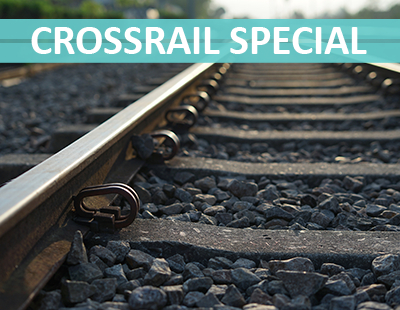Crossrail price premiums
Property prices in postcodes set to benefit from a Crossrail station currently sit at an average of £572,686, some 17% higher than the average of £490,429 across the wider districts in which they are found.
The highest Crossrail boost can been seen at Tottenham Court Road, one of the route’s flagship stations, with property prices in the W1 postcode currently averaging just shy of £2 million, a huge 140% higher than the wider borough of Camden (£822,936).
Bond Street (97%), Liverpool Street (55%), Twyford (40%), Gidea Park (32%), Iver (27%), Whitechapel (26%), West Ealing (22%), Shenfield (21%) and Canary Wharf (17%) are also home to some of the largest Crossrail property price premiums.
More than a decade of price growth
Crossrail was approved way back in July 2008, when Labour were still in government and Gordon Brown was Prime Minister. Since then, property values in postcodes due to benefit from a station have climbed by 65% on average, far higher than the 39% seen across the UK.
The research found that Crossrail stations within London, meanwhile, have seen prices rise at an even greater rate, up by 71% since 2008, although this rate of growth sits at the same level as London as a whole.
The biggest boost in values have again been seen by Tottenham Court Road and Bond Street, with values in the W1 postcode climbing by 172%. Woolwich in South East London has also seen a notable jump with property prices up by 122%, along with West Ealing (97%), Twyford (92%) and Maryland and Stratford (89%).
As well as Crossrail station house prices now sitting 17% higher than their wider areas today, the research also found that this premium has increased from 14% since the transport infrastructure project was given the green light.
This boost in Crossrail house prices has been even more substantial across some stations. For example, in 2008, property prices in Tottenham Court Road’s W1 postcode were 39% higher than the wider area of Camden – today, this premium sits at 140%, a 101% increase in the price premium paid for Crossrail properties.
Reversing negative trends
The research suggests that Crossrail also seems to be reversing negative price trends found around stations due to benefit from the Crossrail effect. In Woolwich, for instance, the average house price in the Crossrail postcode of SE18 stood at £181,022 in 2008, some 23% lower than the wider borough of Greenwich (£233,729).
Today, the average price in the postcode has increased to £401,326 and - while it remains lower than the average for Greenwich as a whole (£421,221) - this gap has closed to just 5%.
In other areas, the research found that Crossrail house prices have experienced a complete turnaround. In 2008, the average property price in the IG postcode (£254,328) - home to the Goodmayes and Seven Kings Crossrail stations - came in 6% below the wider borough of Redbridge (£271,019).
Today, however, the postcode is home to an average property price of £478,831, some 5% higher than the average of £456,098 seen across Redbridge as a whole. This represents an 11% swing on the premium paid for homes close to the Crossrail station.
“Despite the ongoing and extensive delays, Crossrail remains one of the most eagerly anticipated developments to the London landscape in recent times,” Marc von Grundherr, director of Benham and Reeves, said.
“It’s set to transform the way we traverse the capital by train and will substantially shorten journey times for both Londoners, and those commuting from further afield.”
He added: “So it’s hardly surprising that despite its late arrival, many areas due to benefit continue to see a substantial rate of property price growth, with homes surrounding a Crossrail station also commanding a notable premium when compared to the wider area in which they are located.”
He said this strong market performance also comes against a backdrop of Covid uncertainty, which has seen London underperform to some extent when compared to other regions of the UK.
“However, the capital has started to regain momentum with many now returning to work as lockdown restrictions are eased and so we expect to see house prices along the Crossrail route continue to climb as its launch approaches,” von Grundherr concluded.
The Crossrail project has faced huge issues – variously described as shambolic, farcical and a fiasco, amongst other words – and its latest planned opening date could be put in jeopardy by schedule pressures and cost increases at four Crossrail stations (Bond Street, Whitechapel, Paddington and Canary Wharf).
Its original opening date was supposed to be in December 2018, but serious delays and budget issues have kept pushing this back and back. Despite numerous humiliating setbacks for the team behind the project – a joint venture between TfL and National Rail, with input from the Mayor Sadiq Khan and the government itself – the Crossrail effect has shown no signs of waning.
Parts of the line are already open and operating under the banner of TfL Rail, but it seems like the through section will still be some way off.
Despite huge time and budget pressures, Crossrail chief executive Mark Wild has insisted that the project is still on track to open during the first half of 2022 – the most recent planned end date.
During his May project update to the London Assembly, Wild confirmed that the Crossrail team will be ‘relentless’ in ensure the opening date is met, saying that handover of all stations is absolutely crucial to achieving that.
He told City Hall: “On a project as complex as the Elizabeth line there will inevitably be challenges as we work to get into passenger service. However, we will be relentless in our determination and approach to deliver the railway by the first half of 2022, to support London’s recovery.”






/ElizabethLine2-400x310.jpg)











Join the conversation
Be the first to comment (please use the comment box below)
Please login to comment